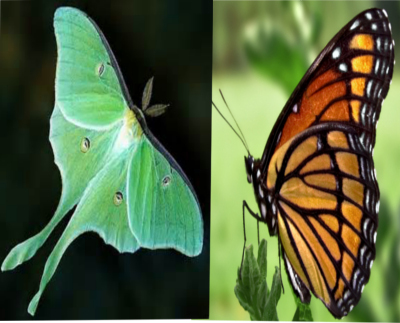Butterflies and Moths
Category: Animals Other

Butterflies and moths are the most admired and collected of all insects, largely for their bright colors and attractive appearance. The male up a group called "Lepidoptera", which means, "scaly winged", and there are over 120,000 species.
Most moths fly at night while butterflies are daytime flyers. Butterflies fold their wings vertically over their back while resting, while moths either fold them along their backs or keep them outstretched.
The life-cycle of butterflies and moths is one of the most interesting things. After they are hatched from an egg, they have two very different stages before reaching adulthood.
When the egg hatches, a caterpillar emerges, which is a feeding and growing machine. The caterpillar has powerful jaws, which it uses to chew up plant materials. AS it grows, its outer skin becomes too small and it grows another one underneath and sheds the old skin.
When the caterpillar reaches full size, it attaches itself to a suitable place by the means of silken threads. It then again slips out of its skin, only to have a harder differently shaped skin underneath. This is the pupa, or chrysalis. While at rest, the organs of the caterpillar break down and nourish small groups of cells, which grow into new adults organs.
When this process, known as metamorphosis, is complete, the adult emerges from its pupa. The crumples and damp wings are expanded by forcing blood into the veins.
The adult's purpose is to find a mate and reproduce. In doing this, it uses up a lot of energy, so it feeds often nectar by sucking it up through its proboscis. After mating, the female lays its eggs and the cycle begins again.
The colors of butterflies and moths all have a purpose. Members of the same species recognize each other by their colors. Patterns and drab colors are used for camouflage, and bright colors are a warning to scare off predators.

 Back To Category Animals Other
Back To Category Animals Other